Images
28. 4. – 26. 5. 2012
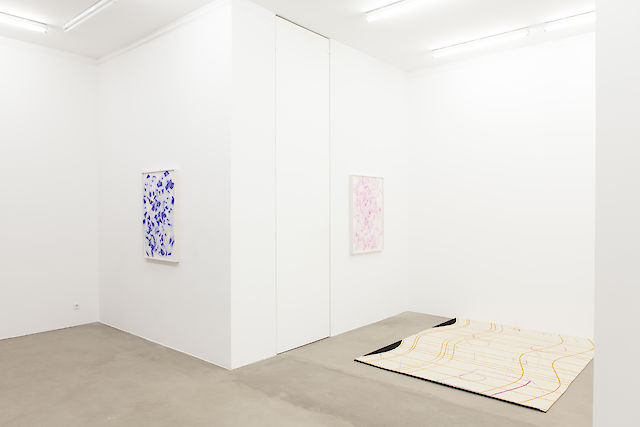
Andy Boot, installation view, 2012
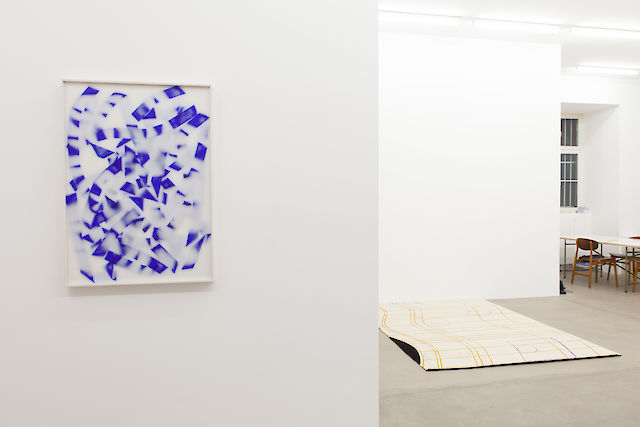
Andy Boot, installation view, 2012
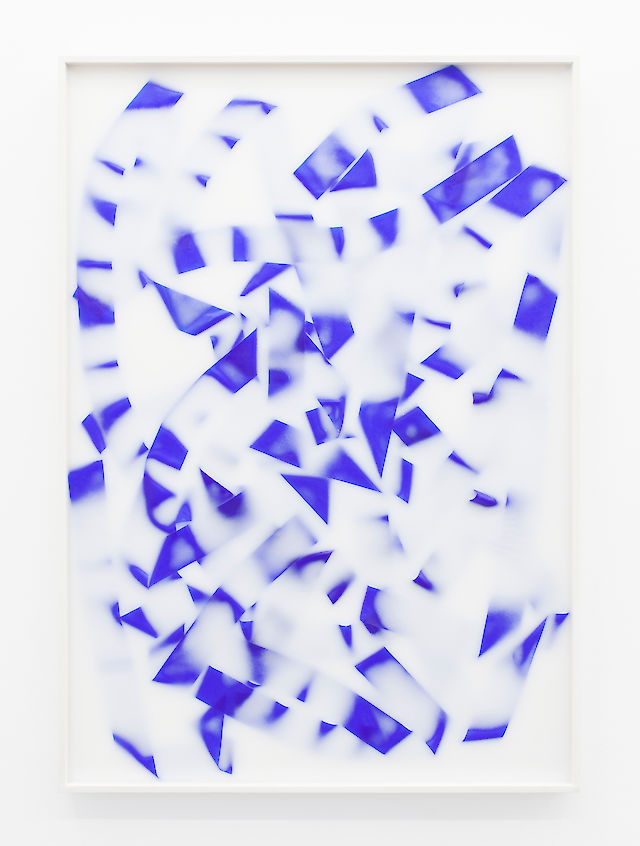
Andy Boot, Untitled (blue), 2012, Rythmic gymnastic ribbon, wax, frame, 72 × 102 cm
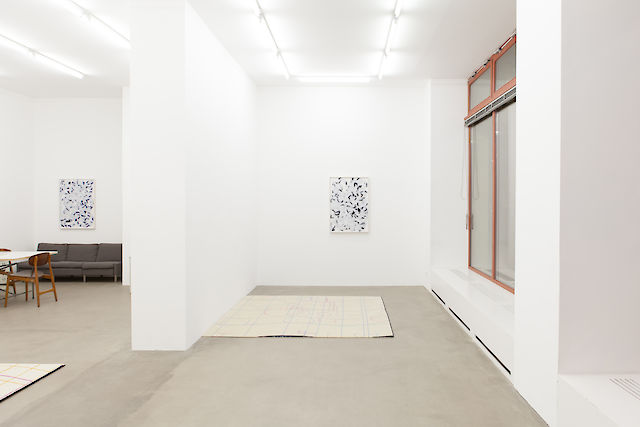
Andy Boot, installation view, 2012
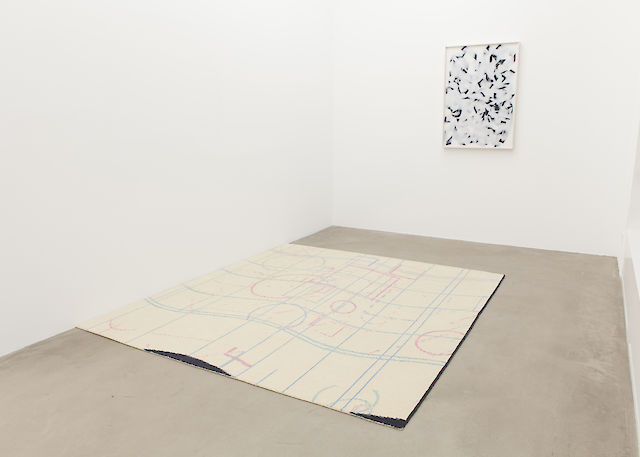
Andy Boot, installation view, 2012
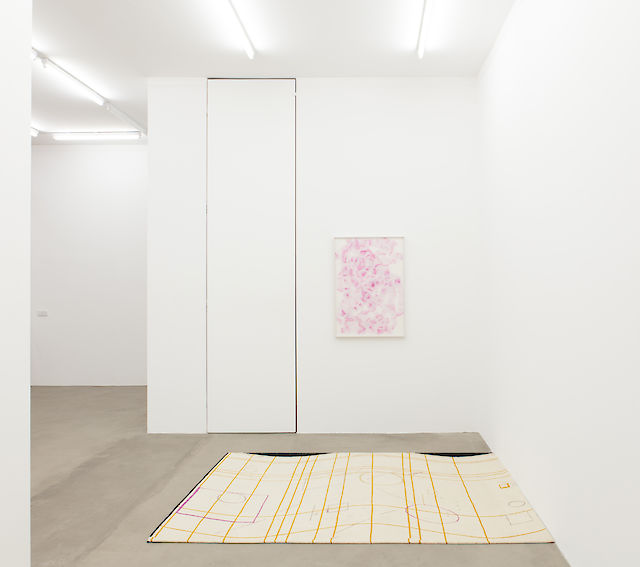
Andy Boot, installation view, 2012

Andy Boot, Trombone, 2012 (detail), Handtufted wool, 186 × 242 cm
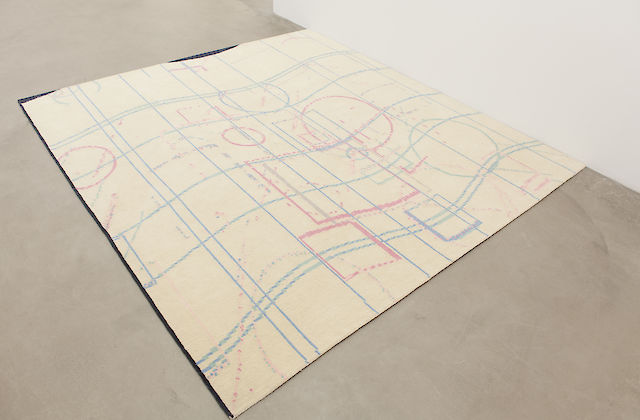
Andy Boot, Submits, 2012, Handtufted wool 222 × 242 cm
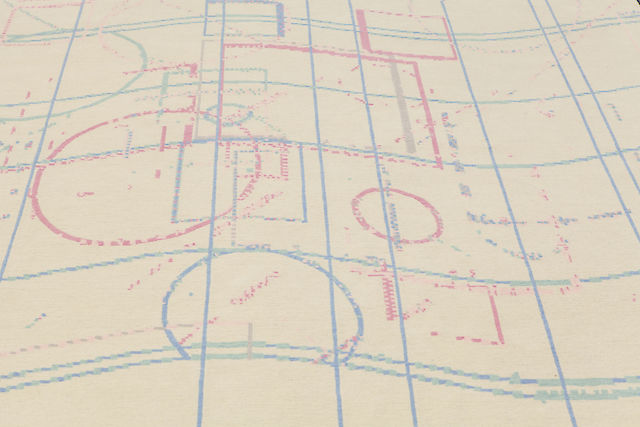
Andy Boot, Submits, 2012 (detail), Handtufted wool 222 × 242 cm
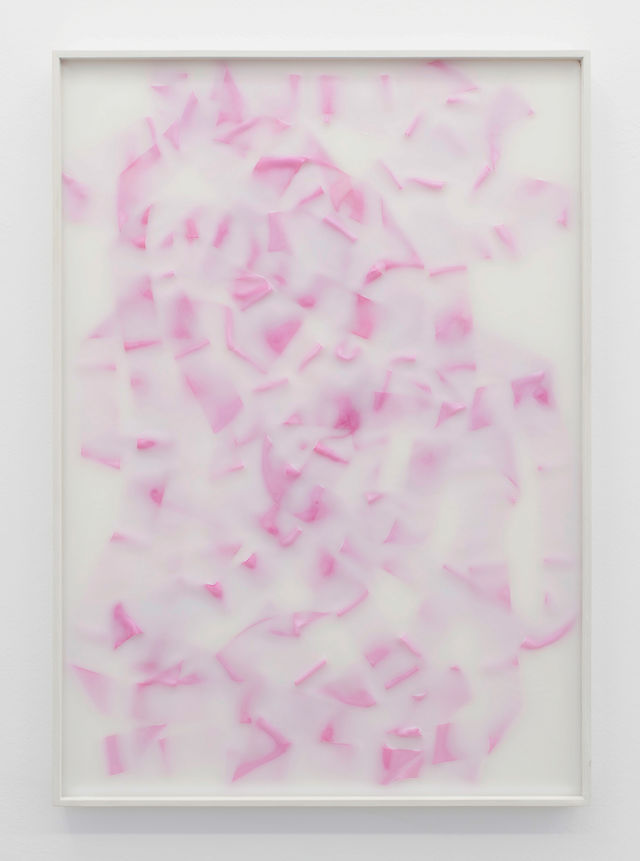
Andy Boot, Untitled (pink), 2012, Rythmic gymnastic ribbon, wax, frame, 72 × 102 cm
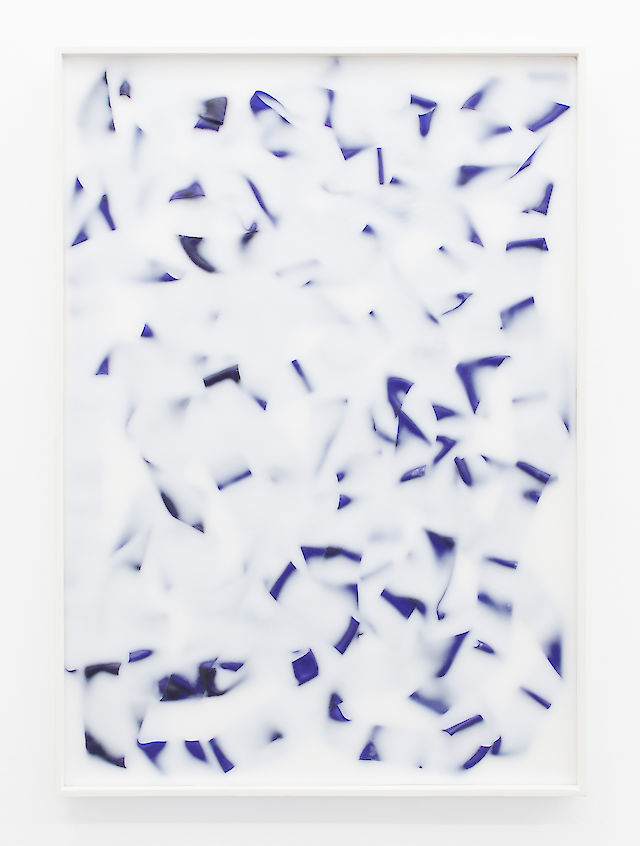
Andy Boot, Untitled (navy blue), 2012, Rythmic gymnastic ribbon, wax, frame, 72 × 102 cm
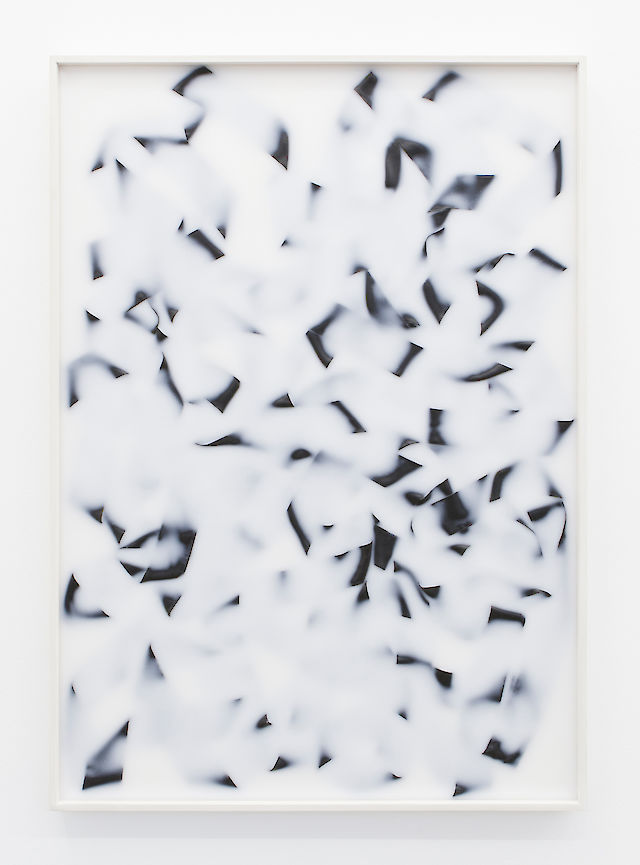
Andy Boot, Untitled (black), 2012, Rythmic gymnastic ribbon, wax, frame, 72 × 102 cm
Press Release
Two large rugs featuring images from junk email advertisements lay the ground for Andy Boot’s solo show at Croy Nielsen. Boot uses what can be considered waste products of the digital sphere, and in this case they are literally interwoven in our material world: Trombone and Submits (all works 2012) have been hand-tufted in Nepal and shipped to the gallery in Berlin, where they evasively adopt postmodernist forms. The abstract patterns originally formed the backgrounds of two specific junk-email images, of which Boot has subtracted their ‘foreground’ graphics. A paradox defines this relationship: the original png-files have been twisted, warped and downsized to ensure they will surpass email filters, while the rugs are ‘upvalued’ by their size, quality and context. Yet the image both as a poor png-file and in the form of a precious rug/piece of art, acts as a surface to serve its specific – digital, aesthetic as well as practical – purpose. In both ways it is conceived as a flattened background which at once alludes to an intriguing depth (let alone formally): Pixelated and reduced in its colour palette, the image compels through murky and dull shades in the digital realm, only to appeal by a similarly coarse yet sinuous aesthetic in the handcrafted rugs, carefully made strand after strand of dyed wool.
Reduction and subtraction of images and space is also at stake in the second new series on view at the gallery. Rhythmic gymnastic ribbons have been left to fall into picture frames that were then filled up with white wax. In action the ribbons form an object and mass, however a few frames later all grace is lost, and the object might as well never have existed. Suspended in solid and hardened wax, they adopt the flattened qualities of the aforementioned png-files, but they also appear as weightless abstract patterns.
The works are part of Andy Boot’s ongoing investigation of different zones or planes integral to the organization of an image: Andy Boot asks, all but rhetorically, not to mention paradoxically, if it is possible to make an image that is not an image. Indeed, what constitutes an image now that we live in the labyrinth of images? What is its current zero degree? And how is that determined? Or perhaps better yet, legislated? (Chris Sharp) He pursues these questions with rigour, still his analysis of images is characterized by wit and modesty: Engaged with gestures of reduction, Boot commits himself to the random and uncertain, until a pattern appears.